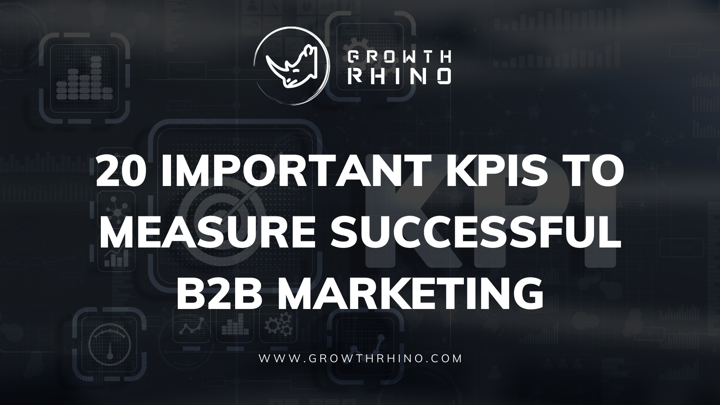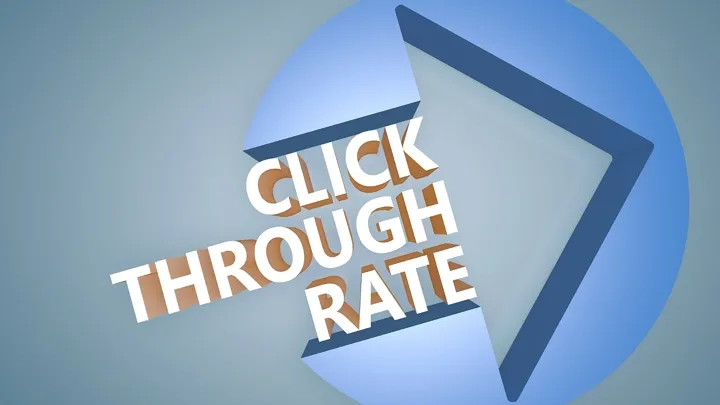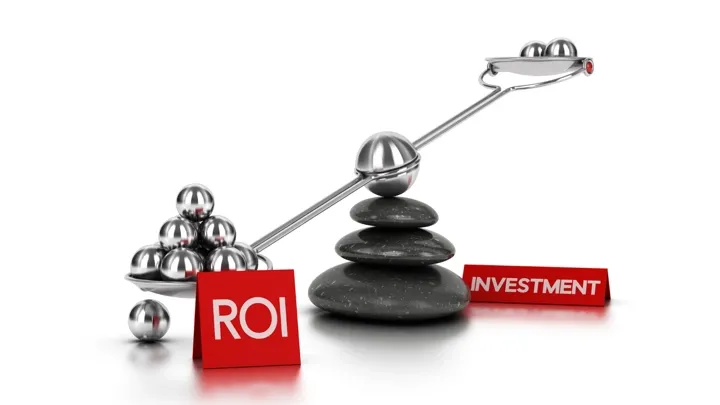
Performance metrics are crucial for any marketing campaign. After all, the ultimate indicator of a good campaign is not the production value or effort exerted but the impact it generated.
You will find out that B2B Marketing has its own set of challenges. Thus, what determines success here is going to be slightly different from other marketing efforts. So, what are the B2B marketing KPIs you should consider?
To answer that question, we need to understand a few basic principles first.
What Are B2B Marketing KPIs and Why Are They Important?
By its name alone, you will understand that B2B Marketing KPIs are simply performance metrics that determine how successful your B2B marketing efforts were. But what’s the reason why they are important for your campaign?
The first reason is that they help you align your campaigns to your goals. Always remember the saying that goes “whatever gets measured, gets done”. With KPIs, you and your team will know what needs to be refined or done away with in your strategies to reach goals.
The second reason is for company morale. There is nothing that can encourage your team more than seeing how their work is impacting the business. Every change measured by the KPIs will lead to discussions on how to improve and innovate. Through these B2B metrics, your marketing team can find better ways to attain the overall goals of your campaigns.
The 20 Most Important KPIs for B2B Marketing:
So what are the metrics that you should be on the lookout for? They are as follows:
1. Website Traffic:
Since your campaigns will be funneling people to your website, you should be monitoring your site’s daily average for incoming traffic. This metric shall tell you where your customers come from, who they are, and what they want from your business.
2. Landing Page Conversions:
As the name implies, this metric measures the number of conversions made on your landing page. Not only will this metric measure the effectiveness of your landing page, but also the impression that most of your audience has about your brand at first sight. If the conversion rate on that page is less than 1%, then it is not as effective in customer conversions.
Perhaps the most crucial indicator of growth in any company would be any changes in the sales figures. In B2B tracking, you have to be mindful in monitoring changes in the sales once your campaigns are implemented. You can look for total sales or sales for particular products. You can also monitor the company’s net profit margin in this category.
3. Customer Acquisition Cost:
This is simply the number of customers you have gained for a period divided by the total marketing expenses you had for that same period. For example, if you gained 1000 new customers and your marketing expenses are at $4000.00, then your acquisition cost per customer is $4.00.
4. Customer Lifetime Value:
One of the more overlooked B2B tracking metrics, CLV monitors the total amount of revenue generated by one person as a repeat customer. The general rule is that CLV increases with every subsequent transaction a customer makes.
5. Cost Per Lead:
This metric will help you understand whether or not an increase in your leads will affect sales. For instance, if your cost per lead is $20.00 and you need 10 leads to create one sale, then your cost per sale is $200.00. The kind of leads that you are looking for will also be important here, but the metric will overall tell you if your advertising budget is enough for whatever sales goals you want to achieve.

6. Lead-to-Close Rate:
Perhaps one of the most important B2B sales KPIs is also the oldest sales performance metric out there. This indicates not only the number of conversions your brand gets with every qualified lead, but also the number of successful transactions made with each conversion.

7. Monthly Recurring Revenue:
This metric determines if your campaigns are sustainable based on the amount they contribute to your monthly revenues. If you have 5 active campaigns, which of those campaigns contributed the most to your average MRR? This will tell you which campaigns should be carried to the next quarter and what to improve.

8. Average Lead Response Time:
Whenever a query is raised by a potential customer or qualified lead, how quick is your team to respond to it? There is no exact figure that determines fast response speeds, but the fastest response time in any industry has always been in under 5 minutes after an issue is raised.
9. New Leads by Source:
Monitoring from where your new leads came from is crucial in finding out where your brand’s presence has the most impact. This way, you can find out if your marketing approaches are generating a lot of traffic and which ones need improvement.
10. Click-Through Rate:
A metric specific for every campaign that you implement, the click-through rate will determine how effective your campaigns are by the amount of web traffic they could funnel to your pages. In essence, this metric will show you how many times your ads were engaged with every time they appeared on the user’s screen.

11. Cost-Per-Action:
This performance metric will relate mostly to the sustainability of your marketing efforts by the number of positive actions they generate. To get this figure, your total cost of conversion must be divided by the total number of conversions made.
For example, if your advertisement generated 2 conversions, one conversion costing you $10.00 and the other $5.00, then your total Cost per Action is $7.50. Whether or not that figure is sustainable depends greatly on your monthly advertising budget.
12. Traffic-To-Lead Ratio:
High website traffic is good only if a sizeable portion of that population will convert into leads. You cannot ensure 100% conversion for all traffic to your site as most of the people visiting your site are either interested but not convinced of your product or complete surfing strangers.
This metric will help you identify if your marketing campaigns are targeting the right demographics and if their messages are compelling enough to generate conversions.
13. Marketing Qualified Leads:
A marketing qualified lead is a person from your audience who has shown an interest or intent to transact with your business. This makes it one of the more important b2b marketing metrics as they can indicate the number of potential opportunities your business has to make a sale.

14. Email Marketing Performance:
One of the often-overlooked B2B KPIs, conversion rates through your email marketing will not only indicate how much of your customer base is sourced from that channel but also the number of people that can be subjected to re-targeting efforts later on. Remember that consent is crucial in becoming part of an e-mail list. In other words, those people in your list that converted did so willingly and because they are convinced in whatever your business has to offer.
15. Social Media Reach and Management:
How your content is being consumed at the different social media sites can tell you which channels to invest in, or at least, improve your presence in. Metrics like the number of shares for each post, growth in your follower base, and the level of engagement in the form of likes and comments will be monitored here.
16. Return on Investment:
To get this figure, you must first determine your net profit and divide it by the amount you have invested in your campaign. If you invested $1,000.00 for your marketing campaigns and received a net profit of $3,000.00, then your ROI is at 300%. Again, this metric will tell you if your current campaigns are sustainable by the number of sales they generate in comparison to the costs.

17. Marketing Qualified Leads to Sales Qualified Leads Conversion Rate:
Although MQLs show interest, they have yet to take any action towards conversion. Thus, you also to monitor your Sales Qualified Leads as this will indicate the number of people engaged by your brand and who have shown a willingness to convert into a paying customer.
18. Cost-Per-Click:
This metric measures how much you spend for every person that clicks on your advertisement. For example, if you spent $500.00 for an ad and 50 people clicked through it, then your cost per click is $10.00 per person.
19. Performance of Qualified Leads:
As was stated previously, the number of qualified leads your marketing efforts generate is one of the crucial B2B Marketing KPIs. By understanding how often your marketing campaigns can compel audiences to complete the customer conversion process, you would have a baseline to refer to for your future marketing efforts.
If your campaigns cannot ensure the same amount of lead to client close rates in every quarter, then perhaps they need to be improved or replaced with something better.
20. Sales Pipeline Velocity:
This metric simply measures the time it takes to funnel qualified leads into a sales pipeline to convert them into paying customers. It will tell you how good your team is in nurturing qualified leads, and which part of your customer conversion process needs to be improved on.
Conclusion:
Since these B2B KPIs are important in monitoring the effectiveness of your campaigns, you might have the impression that finding and analyzing them is challenging. Thankfully for you, there is a lot of Analytics tools out there that you can use to monitor these figures as they change in real-time.
The point is that you should make an effort to track the overall impact of your campaigns as far as sales and conversions are concerned. After all, no amount of marketing would do you any good if they do not ultimately lead to an increase in your business’s profit.
